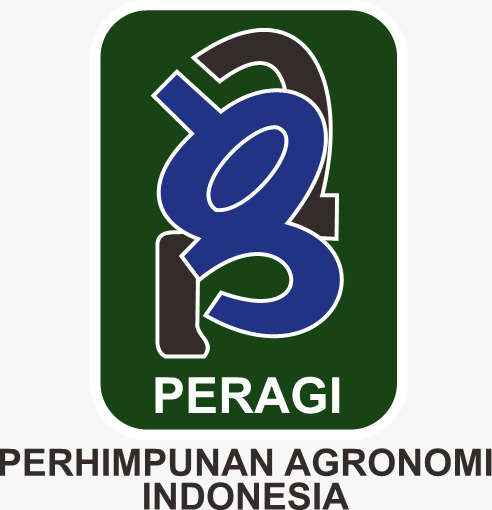Leaves as an Indicator of Potential Production of Palm Sap in Sugar Palm Plants (Arenga pinnata Merr) in South Tapanuli Regency
Abstract
The sugar palm (Arenga pinnata Merr.) is a valuable natural resource, particularly as a source of sap that can be processed into palm sugar. However, its utilization remains suboptimal, as sugar palm plants in South Tapanuli Regency continue to grow wild and have not been cultivated intensively. The morphological characteristics of these plants, such as the number of leaf stalks, are believed to influence sap production. This study aims to identify the relationship between the number of leaf stalks and sap production in South Tapanuli Regency. The study employed a survey method and simple linear regression analysis to investigate the relationship between the number of leaf stalks and sap production. The results indicated a positive correlation between the number of leaf stalks and sap production; specifically, an increase in leaf stalks corresponded to higher sap production. The highest sap production, recorded at 10.27 liters per day, was observed with more than 21 leaf stalks, while the lowest sap production, at 6.78 liters per day, was noted with 1 to 5 leaf stalks.
Downloads
References
Alfiah, L. N., & Abdillah, K. (2025). Morphological characteristics of leaf color and leaf shape of soybean variety Anjasmoro (Glycine max (L.) Merril) under water stress. 7(1), 1–4.
Dewi, I. K., I., & Asmarahman, C. (2022). Produksi nira aren di areal garapan kelompok tani hutan Harapan Baru I dalam Taman Hutan Raya Wan Abdul Rachman. Wanamukti: Jurnal Penelitian Kehutanan, 25(1), 26. https://doi.org/10.35138/wanamukti.v25i1.381
Hans, L., & Thijs, L. P. (2008). Plant physiological ecology.
Harahap, D., Darmadi, E., Mukhlis, & Mahmud, A. (2021). Perlakuan terhadap bunga jantan sebelum dilakukan penyadapan sebagai sumber nira. 4, 729–733.
Harahap, D. E. (2017). Kajian produktivitas tanaman aren berdasarkan sifat morfologi tanaman pada skuen tinggi tempat di Kabupaten Tapanuli Selatan. Jurnal Pertanian Tropik, 4(2), 161–170. https://doi.org/10.32734/jpt.v4i2.3084
Harahap, D. E., Harahap, E. M., & Putri, L. A. P. (2013). Kajian produktivitas tanaman aren berdasarkan status hara tanah dan morfologi tanaman pada skuen tinggi tempat di Kabupaten Tapanuli Selatan. Universitas Sumatera Utara.
Harahap, D. E., Kuswardani, R. A., Siregar, T. H. S., & Darwis, M. (2023). Identification of types companion plants for aren plants (Arenga pinnata Merr) and agroforestry patterns of community forests area. Jurnal Penelitian Pendidikan IPA, 9(11), 10302–10307. https://doi.org/10.29303/jppipa.v9i11.4936
Harahap, D. E., Rahmawaty, Darwis, M., & Harahap, G. S. (2023). Peningkatan produksi gula semut aren melalui teknik penyadapan bunga jantan di Desa Sialaman Kabupaten Tapanuli Selatan. 6, 3028–3035.
Harahap, M. K., Harahap, D. E., & Harahap, A. R. (2018). Karakter daun dan produksi nira tanaman aren (Arenga pinnata Merr) di Kecamatan Marancar. GrahaTani, 4(1), 587–599.
Harahap, P., Rosmayati, Harahap, E. M., Harahap, D. E., & Harahap, F. S. (2018). Eksplorasi dan identifikasi tanaman aren (Arenga pinnata Merr) di Kabupaten Tapanuli Selatan. Pertanian Tropik, 5(3), 423–427.
Heldt, H. W., & Piechulla, B. (2011). Plant biochemistry (4th ed.). Academic Press.
Maretha, D. E., Hapida, Y., & Nugroho, Y. A. T. (2020). Pemanfaatan air nira tanaman aren (Arenga pinnata Merr) menjadi gula semut. http://repository.radenfatah.ac.id/7329/1/cover%2026x36-digabungkan.pdf
Previansari, D., Sukmono, A., & Firdaus, H. S. (2020). Jurnal Geodesi Undip Januari 2020, 344–353.
Putri, O., Lawendatu, G., & Pontoh, J. (2019). Analisis kandungan klorofil pada berbagai posisi daun dan anak daun aren (Arenga pinnata). 12(2), 67–72.
Rademaker, H. (2016). Microfluidics of sugar transport in plant leaves and in biomimetic devices.
Rizaludin, A., Melina, M., & Kusumaningtyas, V. A. (2020). Pengaruh penyinaran lampu LED terhadap proses fotosintesis menggunakan percobaan Ingenhousz. 6 (November), 77–80.
Ruslan, S. M., Baharuddin, B., & Taskirawati, I. (2018). Potensi dan pemanfaatan tanaman aren (Arenga pinnata) dengan pola agroforestri di Desa Palakka Kecamatan Barru Kabupaten Barru. Perennial, 14(1), 24. https://doi.org/10.24259/perennial.v14i1.5000
Silalahi, C. B., Effendi, A., Lubis, N., & Fadila, H. (2024). Response of nutrient levels of oil palm leaves (Elaeis guineensis Jacq) to polyhalite and KCl fertilizers application in Dystrudepts soil. 6(3).
Taiz, L., Zeiger, E., Moller, I. M., & Murphy, A. (2015). Plant physiology and development.
Tenda, E. T., & Weda, D. A. N. (2015). Potensi produksi nira dan benih aren varietas Akel Toumuung (Production potency of toddy and seeds of Akel Toumuung sugar palm variety). 40–48.
Widarawati, R., Yudono, P., Indradewa, D., Nuryani, S., Utami, H., Samigaluh, P. K., & Kulonprogo, K. (2018). Kajian keragaan tanaman aren (Arenga pinnata (Wurmb) Merr.) di berbagai kondisi lingkungan. Prosiding Seminar Nasional, November, 142–147.
Copyright (c) 2025 Darmadi Erwin Harahap, Retna Astuti Kuswardani , Abdul Rauf

This work is licensed under a Creative Commons Attribution 4.0 International License.
Authors who publish with Jurnal Agronomi Tanaman Tropika (JUATIKA) agree to the following terms:
Authors retain copyright and grant the Jurnal Agronomi Tanaman Tropika (JUATIKA) right of first publication with the work simultaneously licensed under a Creative Commons Attribution License (CC BY 4.0) that allows others to share (copy and redistribute the material in any medium or format) and adapt (remix, transform, and build upon the material for any purpose, even commercially) with an acknowledgment of the work's authorship and initial publication in Jurnal Agronomi Tanaman Tropika (JUATIKA).
Authors are able to enter into separate, additional contractual arrangements for the non-exclusive distribution of the journal's published version of the work (e.g., post it to an institutional repository or publish it in a book), with an acknowledgment of its initial publication in Jurnal Agronomi Tanaman Tropika (JUATIKA). Authors are permitted and encouraged to post their work online (e.g., in institutional repositories or on their website) prior to and during the submission process, as it can lead to productive exchanges, as well as earlier and greater citation of published work.







 More Information
More Information



